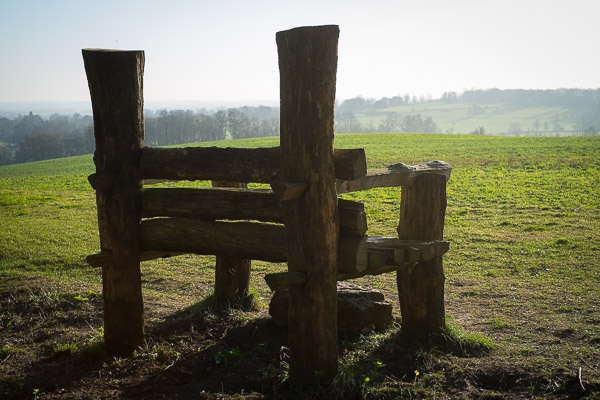…and it’s impossible not to take pictures of them…
Password pain
Regular readers will know that one of the things I’m currently working on is the Pico project, which is trying to find a long-term replacement for passwords.
I learned an interesting statistic yesterday from Angela Sasse: we recently passed the point at which more passwords are entered on mobile devices than on traditional computers, and that, on average, entering a password on a mobile device takes three times as long as on a laptop or PC.
This would seem to confirm our belief that the need for Pico, or something like it, will become more and more apparent over time.
Good times ready to roll
Metadata is data too
The MetaPhone project has some great examples of what you can deduce just from phone call records.
Excerpt:
Participant B spoke at length with cardiologists at a major medical center, talked briefly with a medical laboratory, received calls from a pharmacy, and placed short calls to a home reporting hotline for a medical device used to monitor cardiac arrhythmia.
Participant C made a number of calls to a firearm store that specializes in the AR semiautomatic rifle platform. They also spoke at length with customer service for a firearm manufacturer that produces an AR line.
Mistery
Hidden meaning?

At first I thought this was just a nice seat that had been installed for the purposes of enjoying the view. But now I suspect it may also say something in Japanese… 🙂
Aero-worship
 If you’re a fan of the Aerobie frisbee-like device, or the Aeropress coffee maker, or, like me, both of them, you’ll enjoy Zachary Crockett’s fine article about how they came into existence, and about Alan Adler, their inventor. Nicely done.
If you’re a fan of the Aerobie frisbee-like device, or the Aeropress coffee maker, or, like me, both of them, you’ll enjoy Zachary Crockett’s fine article about how they came into existence, and about Alan Adler, their inventor. Nicely done.
Many thanks to Hap for the link.
Silent movies?
You can’t have an explosion in a movie without a big bang, even if that explosion comes from a starship drifting through the vacuum of space. If the USS Enterprise is anywhere nearby, it’s also likely to be buffeted by the pressure waves, and the crew thrown across the bridge.
In a similar vein, it was one of the Weta Workshop guys in the ‘bonus features’ on the Lord of the Rings DVDs whom I first heard point out that swords, coming out of wood-and-leather scabbards, somehow always make a zzzhinggg sound. Whereas in fact…
Well, I’ll let this chap demonstrate:
Thanks to James Fraser for the link!
Crossing into night

St Andrew’s Church, Orwell
Evening beach
Spinning the cloud
You might think that, of all the household devices that could be connected to the ‘net, a washing machine would be amongst the least useful, except perhaps for the purposes of energy monitoring or service diagnostics.
So I was particularly impressed with Berg’s Cloudwash demonstrator, which emphasises the user interface aspects of connectivity. It’s always struck me that washing machines tend to have particularly awful user interfaces. Until very recently, for example, we had one where program ‘4’ was the one we used all the time. We needed to remember that, and on the rare occasions when we needed a different program, we had to look it up on a card.
Often, by giving a device connectivity, you can also give it a better user interface, even if that’s only used to configure the buttons on the front.
Adobe Creative Shackle
As anyone who uses Adobe software seriously will know, the company has moved wholeheartedly over to the ‘software as a service’ model, replacing their former ‘Creative Suite’ packages with the ‘Creative Cloud’.
Now, this makes pretty good sense for them as a company, and reasonable sense for many of their users. Adobe software has never been cheap, in fact, it’s been outrageously expensive, but there are some areas where it just can’t be beaten, and for the huge number of people who make their living from using it day in, day out, the £47-per-month subscription still makes sense. For that, you get access to almost everything – Photoshop, Illustrator, Premier, After Effects, InDesign… you name it. If you’re a design house, and you’ve gotta have it, the £570/year does at least ensure you always have the latest versions of everything.
But there are problems, too, beyond the inflated base price. It’s always been hard to swallow the fact that they charge European customers nearly twice as much as American ones, a practice they’ve continued to some degree with CC. Their upgrade pricing has never been very generous if you’re more than a version or two behind, and they release new versions regularly, so it’s not just the initial purchase that’s painful, you have to swallow a large chunk of it again every few years. And for people like me who use the software more sporadically, the cost was increasingly hard to justify.
But my recent purchase of Adobe Creative software was quite probably the last one I will ever make, for a more fundamental reason.
You see, in the past, you at least had the option of when, or indeed whether, you wanted to upgrade. With Creative Cloud, even if you can afford to keep paying, the problem is that you can’t afford to stop paying. Because if you stop, you don’t get to stick with the last version you installed. Oh no. You lose the ability to run the software altogether. And that means you lose the ability to access your own data. I’m sure in a movie plot that would be called blackmail.
They get away with it only because of branding. You see, there are many other cloud-based services where you lose access to the service, and often to your data, if you stop paying, though only a fool would sign up to one where the data couldn’t easily be exported in a non-proprietary format. But this, despite the name, doesn’t feel like a cloud service. For one thing, the software runs on your machine, not on theirs – you’re not paying them for computation power: it’s basically a software-upgrade service. However, the first part of the name is accurate: this is software used by creative professionals who use it primarily to make new stuff by combining the inspiration of their muses and the sweat of their brow. They, perhaps, more than your average cloud service user, will feel the pain when denied access to their past creativity.
So, when I realised this was happening, I took a deep breath and bought a copy of Creative Suite 6 – an expensive purchase of software that was already 18 months old – because it’s the last version that I know I’ll be able to run for many years, and will give me pretty much indefinite access to my data. Especially if, like me, you’re lucky enough to be entitled to academic pricing, I recommend you consider doing the same.
Like Apple, Adobe have generally produced very good products. But customer sentiment about the two companies is diametrically opposed. Apple’s customers generally love them; they have plenty of choice elsewhere but they keep coming back to pay the inflated prices because they delight in what they get in return. Adobe’s customers, on the hand, despair about the fact that they have to keep paying the inflated prices because they have little choice elsewhere. I think one of these is not a recipe for a sustainable long-term business. The Creative Cloud has thrown the issue into sharp relief.
© Copyright Quentin Stafford-Fraser




Recent Comments